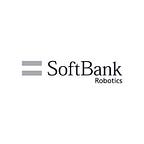Ways Cleaning Robots Reinforce Your Health and Safety Plan
Hiring and retaining employees in a post-pandemic world means focusing on more than just salary and benefits. Employers now need to emphasize their commitment to employee health and safety. While ensuring workplace safety has always been an important aspect of human resources, the COVID-19 pandemic has brought these protocols under the microscope like never before.
As employees prioritize health and safety in their work lives, human resource professionals should be ready to answer questions about what the organization is doing to protect their employees. As an HR professional, you can expect to field questions like:
- What are the policies for working on-site during COVID-19?
- What changes have you made to keep employees and customers safe?
- What cleaning protocols are in place to prevent spreading illnesses?
- How often are work areas cleaned?
Be prepared to answer these questions with a clearly articulated health and safety plan that can be shared with both current and future employees. For practical steps to preparing your plan, download our Office Cleaning Checklist.
However, documenting and sharing a health and safety plan is just one piece of the puzzle. Employees must see the plan in action for it to truly make an impact. Cleaning automation can help you accomplish this in several ways.
1. CLEANING ROBOTS LET WORKERS SEE AND HEAR CLEANING IN ACTION
Cleaning robots can run at all hours of the day without disrupting employees’ workflow. In fact, autonomous cleaning robots will automatically stop, or move out of the way, if they encounter someone in their path. However, seeing and hearing these robots can reassure workers that their environment is being thoroughly cleaned — day in and day out.
For example, Whiz, the autonomous vacuum sweeper from SoftBank Robotics, developed and distributed in partnership with Brain OS and ICE Robotics, moves independently through open areas and hallways, lifting debris from the buildings number one air filter — the carpets. As Whiz works, many customers mention the benefit of being able to hear and see the robot in action — a reminder that cleaner air is in progress.
2. CLEANING ROBOTS CAN TRACK AND CONFIRM WHEN SPACES WERE LAST CLEANED
In addition to being a visual reminder of cleaning protocols, cleaning robots also provide concrete data to quantify your health and safety plan. For example, data from Whiz can be used to verify when each space was last cleaned. This information can be posted clearly to reassure employees that the workspace has been thoroughly and recently cleaned.
3. CLEANING ROBOTS GIVE YOU TIME BACK TO SANITIZE AND DISINFECT
Bringing cleaning automation into your workplace gives cleaning teams time back for tasks like more frequent sanitizing and disinfecting tasks that are now required. For example, an autonomous vacuum sweeper like Whiz can save up to 30% of your cleaning team’s time, so they can focus on deep cleaning instead of spending hours vacuuming.
4. CLEANING ROBOTS ARE AN INEXPENSIVE WAY TO RAMP UP CLEANING PROTOCOLS
By adding robots to your cleaning protocols, you can keep your workplace clean, healthy, and safe without steep additional costs. This is possible because some cleaning robots, like Whiz, are available with a subscription model for a low monthly fee — no upfront investment or maintenance costs required.
Conclusion
Having a clear health and safety plan in place — and having the tech to put that plan in action — will differentiate your company as an employer, retain current employees, and attract new talent. Contact SoftBank Robotics today to learn more about how Whiz can reinforce your health and safety protocols.
Written By: SoftBank Robotics Team
